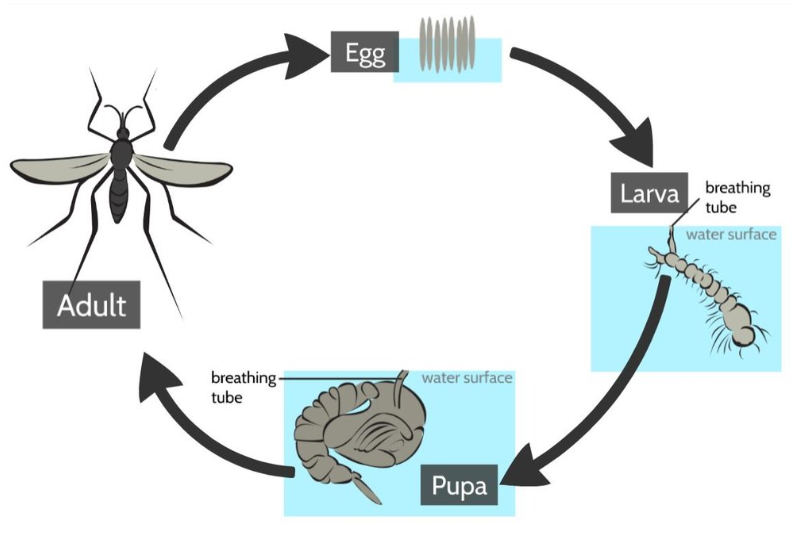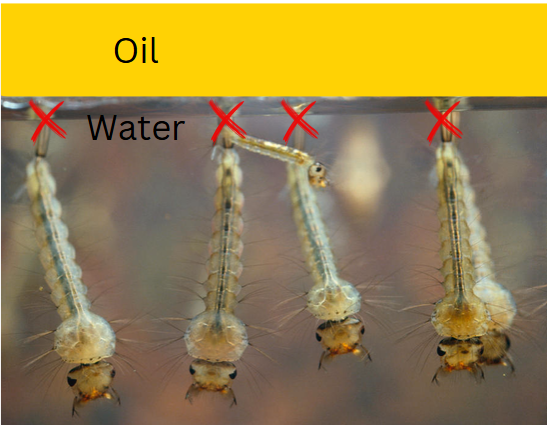Mosquito Bit My Toe!

Have you ever been bitten by a mosquito? 

One of the worst spots a mosquito could bite would be the toe 
Let’s Learn More About Mosquitoes!
Mosquitoes are winged insects, with three body parts (head, thorax, abdomen), 6 legs and a pair of feelers.
In Singapore, there are 3 main species of mosquitoes. They are the Aedes, Anopheles and Culex mosquitoes. The most well-known species would be the:

Aedes aegypti mosquito. Image created with BioRender.com
Aedes mosquitoes
Aedes aegypti and Aedes albopictus
They are famous for being carriers of the Dengue virus, which causes us to have Dengue fever.
One way to recognise them would be their white and black stripes on their body and legs.
Mosquito life cycle
The life cycle of a mosquito consists of 4 stages:
- Eggs: Adult mosquitoes lay eggs on stagnant water.
- Larva (wriggler): the egg hatch into a larva and breathes using a breathing tube to take in atmospheric air (oxygen) above the water surface. The larva feeds on tiny organisms and food particles in the water. The larva moults several times during this stage.
- Pupa: After the final moult, the larva develops into a pupa. The pupa stays near the water surface and does not eat. The pupa develops into an adult inside the exoskeleton.
- Adult: When it is ready, the adult emerges from the exoskeleton of the pupa. Once their wings are dry, they fly off. As an adult mosquito, they are able to reproduce.

How do you prevent mosquitoes from growing near you?
Mosquitoes lay their eggs in stagnant water, and they go through the first three stages in the same pool of water. We can control their populations by breaking the life cycle. By preventing them from breeding, we are keeping ourselves and our community safe! Here are three ways:
You can pour a layer of oil in areas that collect water such as flower vases. Oil is less dense than water (lighter than water), so it will float on the water.
The larval and pupal stages of mosquitoes breathe using breathing tubes. These breathing tubes stick out from the surface of the water to take in air from the atmosphere. Adding the layer of oil prevents the young of mosquitoes from taking in oxygen for respiration, causing them die.

You can also overturn pails in the toilet for them to dry and make sure to frequently check and empty out water in places that usually collect water.
This reduces the number of breeding habitats that they can live and reproduce in.

In Singapore, fogging is used to control mosquito populations in our communities. The insecticide is sprayed in the form of a mist so that it can disperse over a wide area. Adult mosquitoes coming into contact with the mist will die.

How can you protect yourself from getting bitten?
Apply insect repellent whenever you go to places that may have mosquitoes, e.g. forested areas.
You can wear long-sleeved shirt and pants as they cover more of your skin and makes it harder for mosquitoes to bite you.

P3 P4 Science: Diversity | Life Cycles
- Mosquitoes have a 4-stage life cycle that consists of the egg, larva, pupa and adult.
- The adult mosquito has wings to fly.
- The mosquito sheds its hard and stiff exoskeleton during the larval stage to grow larger.
- The larva of a mosquito is also known as the wriggler and it takes in atmospheric air containing oxygen using its breathing tube.
- The mosquito spends most of its life in water (egg, larva, pupa). Only the adult mosquito lives on land.
I hope you have learnt more about mosquitoes and how to protect yourself from getting bitten. Keep your toes (and your whole body) safe!

